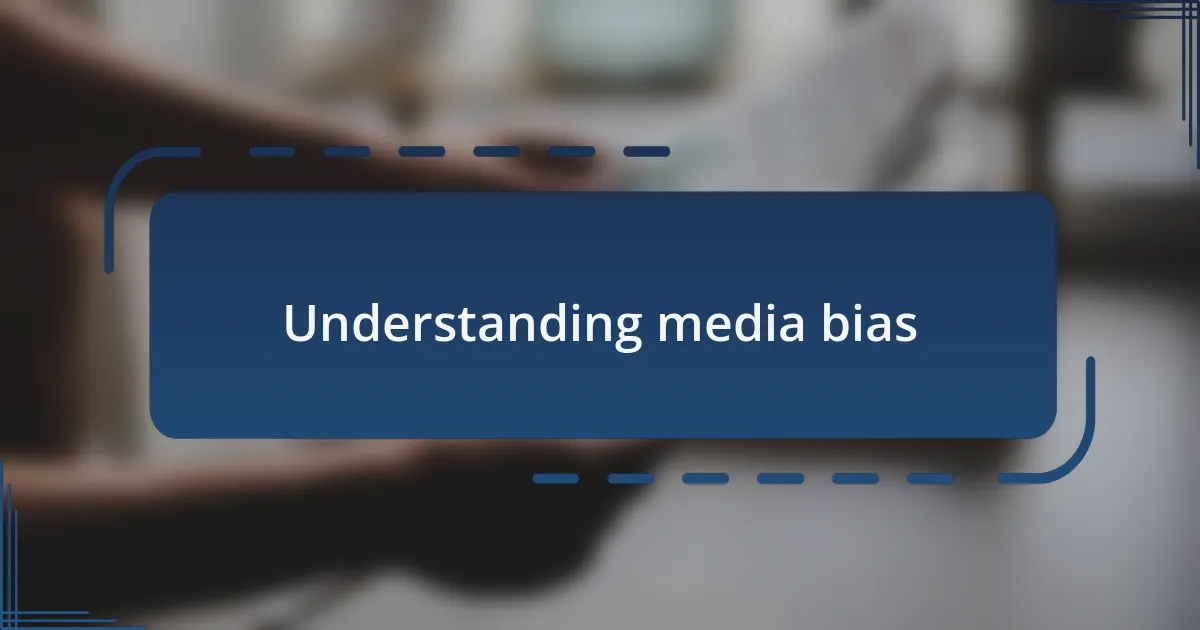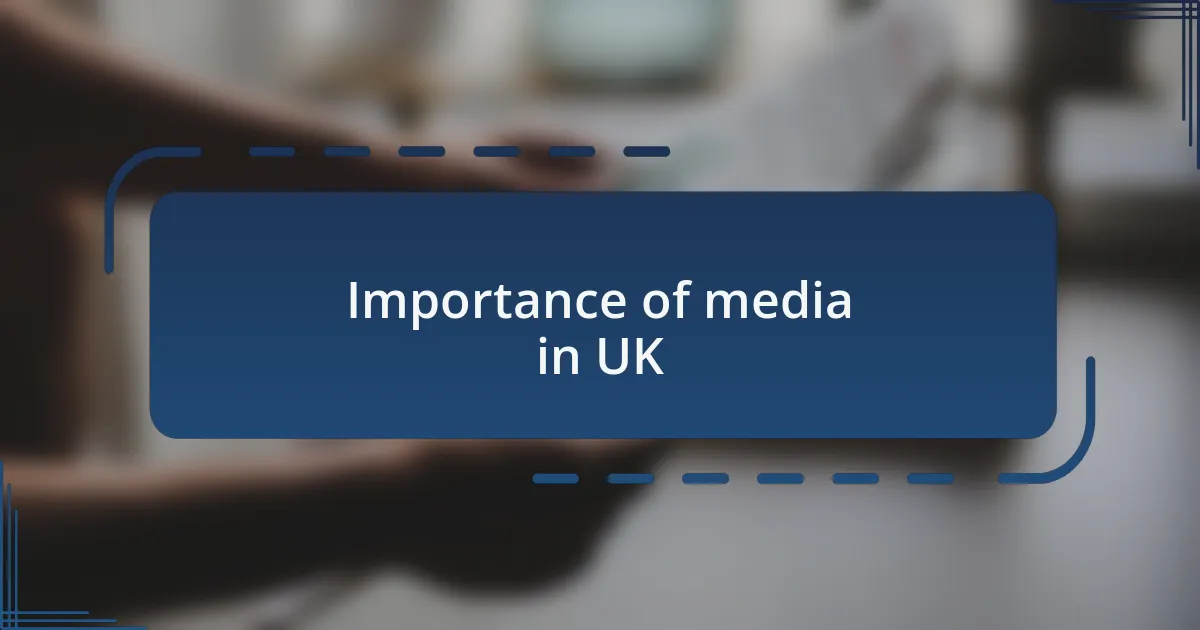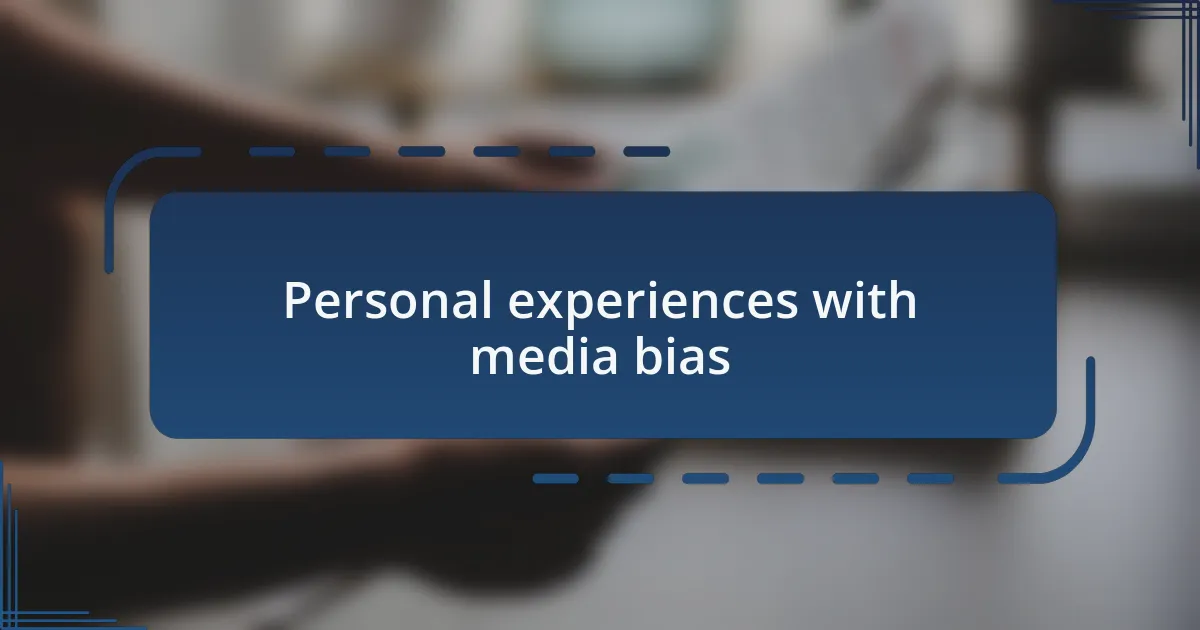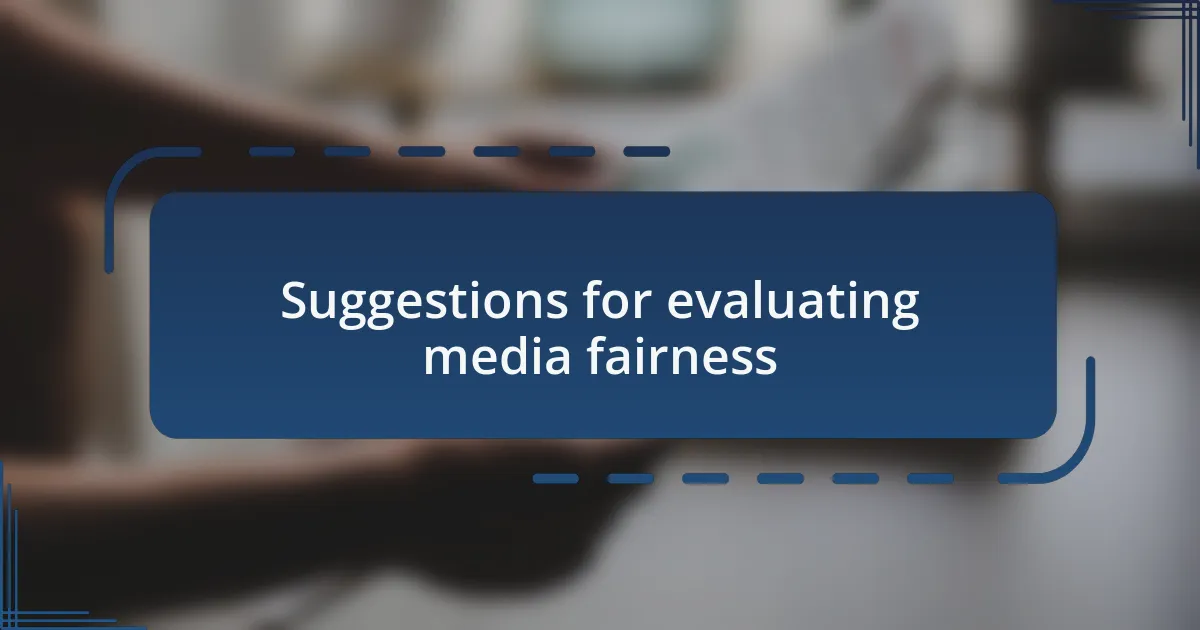Key takeaways:
- Media bias shapes public perception and can frame events in contrasting ways, emphasizing the need for diverse perspectives.
- The UK media landscape is diverse, but biases can still affect even reputable sources, highlighting the importance of critical consumption of news.
- Different news outlets can portray the same events, such as Brexit and the pandemic, in significantly different lights, prompting questions about narrative acceptance.
- To evaluate media fairness, examine language, cross-reference sources, and engage with audience reactions to uncover underlying biases.

Understanding media bias
Media bias is a subtle yet powerful force that influences how we perceive news and information. I often find myself questioning, “Are the headlines painting a complete picture, or are they skewed by the outlet’s perspective?” This sense of skepticism is crucial because I’ve learned that media outlets can prioritize sensational stories over nuanced reporting, shaping public opinion in ways that may not reflect reality.
During my own exploration of different news sources, I’ve come across starkly contrasting portrayals of events that left me feeling disoriented. For instance, a political event can be described as either a “historic victory” or a “narrow escape,” depending entirely on the outlet’s viewpoint. This experience made me appreciate the importance of seeking diverse perspectives; it’s like peeling back layers of an onion to uncover the truth beneath.
I’ve come to realize that recognizing media bias often requires keen observation and critical thinking. When I read an article, I tune into the language used and the framing of certain issues. Is it meant to elicit fear, hope, or anger? This awareness not only informs my understanding but also empowers me to engage with the media more thoughtfully. How about you? Have you noticed similar patterns in your media consumption?

Importance of media in UK
Media in the UK plays a pivotal role in shaping public discourse and opinion. I remember a time when a major political event unfolded, and the headlines flooded in. Each outlet brought a different lens to the narrative, which made me realize how media can not only inform but also sway emotions and reactions. Isn’t it fascinating how the same event can evoke such varied interpretations?
Reflecting on my own experiences, I often turn to BBC for its reputation of balanced reporting. However, even the most trusted sources can present biases that color the way information is conveyed. For instance, I’ve noticed reporters often choose certain words that can lead audiences toward a specific interpretation of events. This pointed me to the realization that media doesn’t just report news; it also filters reality through its unique lens. How do you decide which sources to trust?
The impact of media extends beyond individual perceptions; it has the power to influence policy and societal norms. In local communities, stories shared about issues like climate change or social justice can galvanize action or, conversely, incite apathy. During my involvement with community initiatives, I saw firsthand how a single article could spark a movement or silence a debate. Have you experienced this kind of influence in your own community?

Overview of UK news media
The landscape of UK news media is incredibly diverse, encompassing a broad spectrum of outlets from traditional newspapers to digital platforms. Each of these plays a crucial role in how information is disseminated, often reflecting the regional, cultural, and ideological nuances of their audiences. I often find myself exploring various sources, from the Guardian’s in-depth investigative pieces to the quick updates offered by online news aggregators, which keep me informed in different ways.
When I recall my own experiences with media consumption, I remember a time I stumbled upon a small, local publication that covered grassroots movements. Its reporting felt different—more personal and community-oriented—compared to the national outlets. The power of that perspective struck me. How often do we overlook the voices of smaller publications that shine a light on critical issues? These outlets, though sometimes overshadowed by major news corporations, often capture stories that matter deeply to communities.
Moreover, the evolution of media in the UK has led to increased scrutiny regarding accuracy and bias. As I engage with current events, I realize how the competition for clicks can sometimes overshadow journalistic integrity. Are we, as consumers, complicit in this shift? I see myself grappling with this question more often than I’d like, as the desire for sensationalism can distort essential truths we need for informed discourse.

Personal experiences with media bias
There was a moment when I was following a major political story, and I noticed how different outlets framed the same event. The headlines were polar opposites—one emphasized the potential gains from a new policy, while another highlighted the risks. This inconsistency left me uneasy. How could I form an opinion when the information felt so skewed?
I vividly recall an incident during a news cycle centered around a protest. I tuned into a broadcast that displayed the event as chaotic and violent, while a friend shared a video from a citizen journalist that showcased peaceful dialogue and community engagement. That contrast opened my eyes to how selective editing or reporting can shape perceptions. It made me question: How often are we being fed a narrative rather than the whole story?
Reflecting on these experiences, I still feel a lingering frustration. I keep wondering if our role as consumers is to sift through this bias or just accept the narratives presented to us. It’s disheartening to think that our understanding of crucial issues may be filtered through someone else’s agenda. Each time I engage with the news, I aim to challenge that bias, pushing myself to seek out diverse perspectives.

Analyzing specific UK news examples
When I reflect on the coverage of Brexit in various UK news outlets, I’m astounded by the stark differences in portrayal. For instance, some columnists hailed the divorce from the EU as a rejuvenating leap into sovereignty while others described it as an unprecedented economic risk. It makes me wonder, how do we reconcile these viewpoints when they are both presented as fact?
A particularly telling instance occurred during the 2021 coverage of the pandemic lockdowns. One major news channel focused on the economic fallout, discussing its impact on businesses and employment. Meanwhile, another outlet zeroed in on the public health benefits, underscoring how measures saved lives. This divergence in focus left me asking, which angle should I prioritize? Isn’t it our responsibility to consider the broader context rather than accepting a singular narrative?
My daily experiences with social media only amplify these biases. I often see people passionately sharing articles that reflect their beliefs, without questioning the source’s slant. This dynamic feeds into the echo chamber phenomenon, causing me to ponder: How do we break free from this cycle and engage critically with news that truly informs, rather than just confirms our existing views?

Suggestions for evaluating media fairness
One way to evaluate media fairness is to examine the language used in reporting. I often notice that certain terms can evoke different emotional responses; for instance, calling a protest a “riot” versus a “demonstration” can set the tone for the entire narrative. Do we really grasp the implications of such choices? I feel it’s crucial to be aware of these linguistic subtleties as they can shape our perceptions.
Additionally, I find it helpful to cross-reference information across multiple outlets. Recently, when reading about the ongoing debates on climate policy, I discovered that contrasting perspectives often highlight different facts. This practice not only broadens my understanding but also reveals potential bias when certain critical aspects are omitted. Isn’t it interesting how a diverse array of sources can lead to a more comprehensive picture?
Finally, I think engaging with audience comments can provide insight into how a piece is received. I often dive into the comments section after reading an article to gauge public sentiment and reactions. This engagement allows me to assess whether the reporting resonates with a wider audience or merely caters to specific viewpoints. How frequently do we consider the collective response when evaluating fairness? It’s a simple yet effective way to uncover layers of bias often overlooked.